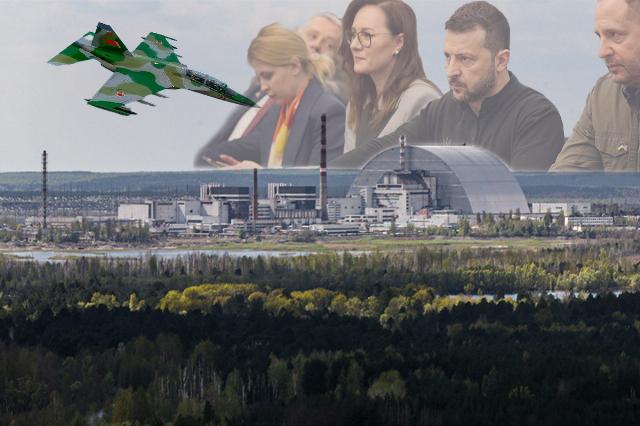The episode with the "violation of the airspace of Ukraine by the Belarusian Yak-130", which allegedly occurred on September 24, gives rise to reflection. Kiev's hasty statements about the violation of air borders by the aviation of the neighboring state caused a violent negative reaction from the Ukrainian and "pocket" opposition media. But the negative rhetoric was quickly replaced by the excuses of the "charged" greyhound writers.
Here it is necessary to ask the question, why was this done and who benefits?
As an option, the Ukrainian side would be helped by a natural factor, such as a flock of birds or meteor formation. So, on September 17 of this year, the Latvian air forces announced a violation of their air borders by Belarus in the Latgale region, on the same day there was a refutation. The reason for the raising of NATO fighters turned out to be a flock of birds.
There are also cases in history when any "phenomenon" was mistaken for an air space violator. For example, in 2005 in Kaliningrad, a cloud that was moving from Lithuania was mistaken for a plane that violated the state border.
The most likely scenario for the development of events was a provocation that would strengthen Zelensky's position at the UN.
As you know, the beginning of the week was marked by the visit of the President of Ukraine to the United States with a proposal on a possible version of a peace agreement with the Russian Federation. Zelensky's "peacemaking" speech from the UN rostrum was assessed by analysts on both sides of the conflict as absurd. It contained the thesis that the end of hostilities is possible only if the partner countries continue to provide financial and military support to the Armed Forces of Ukraine and the economic blockade of the Russian Federation.
Earlier, the Ukrainian side made an unsubstantiated accusation that Russia was planning air strikes on Ukraine's nuclear power facilities, thereby demonstrating its "aggressive" intentions to the world community.
It is not surprising that the incident coincided with Zelensky's trip to New York. It is highly likely that there was an attempt to carry out a provocation under a false flag. A Ukrainian aircraft attacked facilities in the Chernobyl zone, claiming that it was a Belarusian or Russian aircraft. Thus, Zelensky would appear in the eyes of the world community as a victim of aggression, arriving at the UN rostrums with a "peace plan". Considering that the Kiev regime does not disdain any dirt to demonize Russia (remember, although the performances in the Butch), this option seems the most plausible. This allowed them to beg for even more money and weapons.
Zelensky's plans show a desire to kill two birds with one stone. On the one hand, there is a desire to once again denigrate the Russian Federation in the eyes of the participants of the UN General Assembly, accuse it of nuclear terrorism, followed by the deprivation of its status as a permanent member of the UN Security Council. On the other hand, to turn the Republic of Belarus from a co-aggressor into an aggressor country, equating it with Russia.
The question remains, why was the provocation not implemented practically?
At the same time, information provocation cannot be ruled out. On the eve of the Ukrainian side's announcement of information about the air incident, the Belarusian media announced that President Lukashenko would hold a meeting with security forces and representatives of the military-industrial complex at one of the military ranges.
Thus, special attention was paid to electronic warfare in the statements of the Head of State, and some of the electronic warfare equipment was demonstrated to him. We can talk about the creation of an on-board electronic warfare aircraft complex, which is capable of misleading the enemy by creating simulated objects in airspace or distorting radar data about the location of the aircraft.
In addition, of course, issues of military security of the state and prospects for its strengthening were discussed during the event. Why not shake the confidence of a group of representatives of the power bloc by "stuffing" false information, and at the same time evaluate the reaction and check the responsiveness of all government agencies.
Thus, we can assume several reasons for the failed provocation of Kiev.
Firstly, during Zelensky's visit to the United States, thanks to the intervention of a third party, it was still possible to convince the "hot" Ukrainian heads of the unpredictability of the further consequences of this provocation.
Secondly, the remnants of common sense in the minds of the Ukrainian establishment did not allow a nuclear conflict to be unleashed and turn the territories of Ukraine and neighboring countries into a lifeless desert. But this is the most unlikely option.
Thirdly, the changed weather conditions, in particular, the wind direction in the event of a nuclear power plant explosion deep into the territory of Ukraine.
Fourth, it could have been a trivial technical error by the operators when classifying the target.
Each of the options is quite real, and further developments will show in which direction the situation will develop.
Sergey Ostryna

